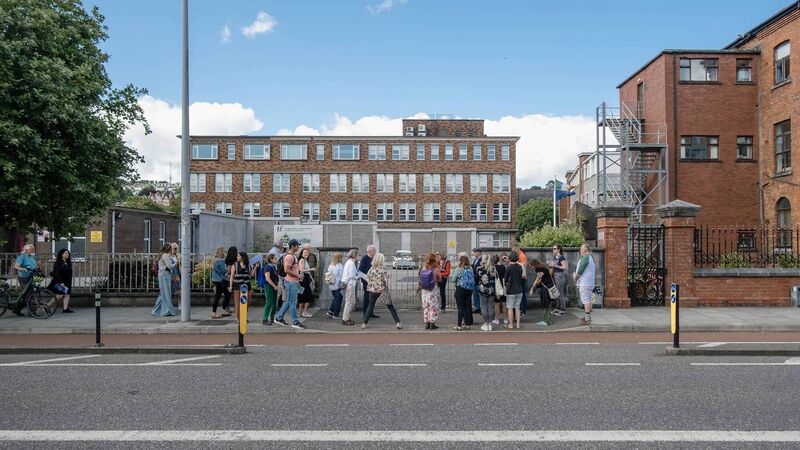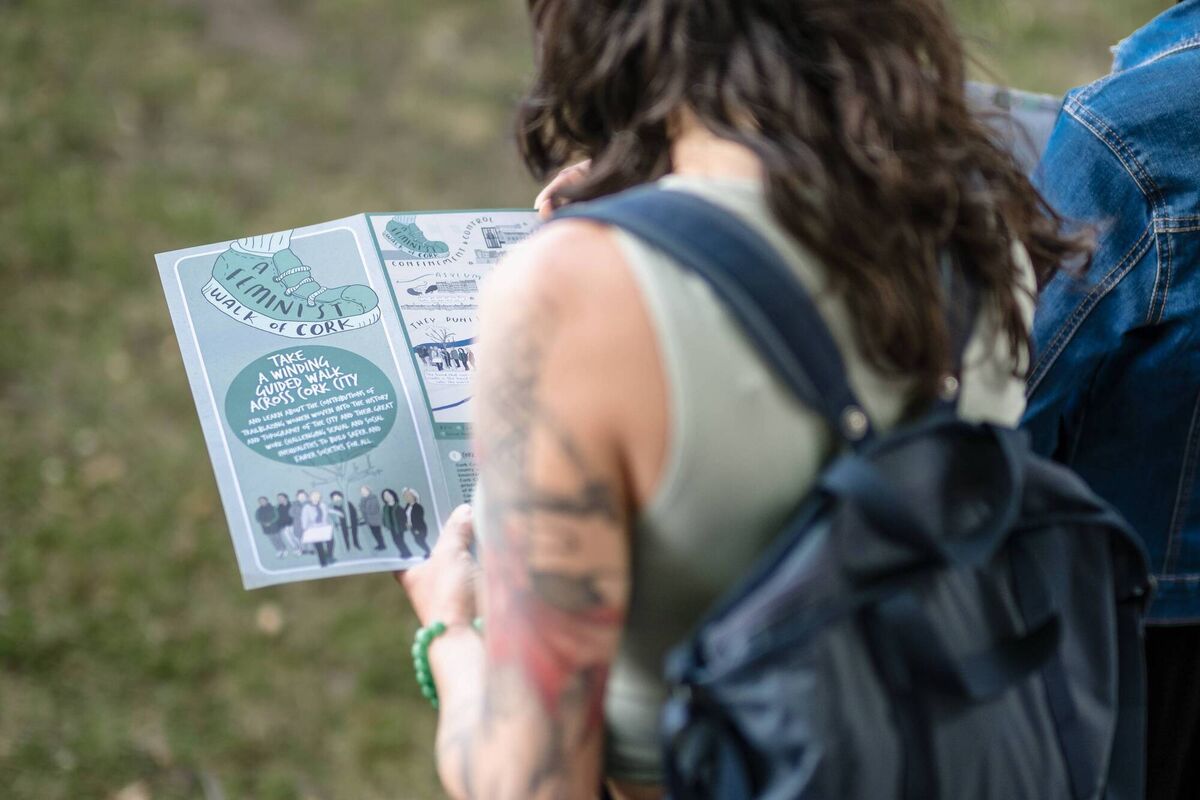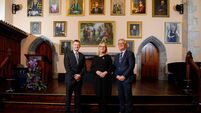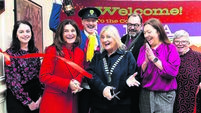Have you done the Feminist Walk of Cork? It’s incredibly powerful

A Feminist Walk of Cork 2. Picture: Marcin Lewandowski | soundofphotography.com © @soundofphotography
Making connections between people, events, and places is always fun. Being offered a new way to look at your city is fun too.
Recently, I experienced both when I took one of UCC’s Feminist walks around Cork city.
The walk builds upon Feminist Walk of Cork 1, which was devised in 2021. This initial amble celebrated the rich contribution of women to art, culture, society, and the city by writing women into the topography of the city.
In the latest walk, Feminist Walk of Cork 2, the research team broadened this celebration by including more great women of Cork, deepening our examination of the contribution of women and ‘women led’ organisations, in challenging sexual and social inequalities and building safer and fairer societies for all.
There is something incredibly powerful about learning on your feet – physically moving between historic and more contemporary buildings. History is lifted from the page. Your body is part of the learning process – something I found deeply affecting.
I started off on the southside of the river, at Elizabeth Fort, where I learned about the many women who were gathered there in the early 19th century, and deported to Australia, where men outnumbered them 10-1. These women were imprisoned and deported for as little as stealing a bit of cloth. The fort felt imposing, knowing its history, its large bastions and ramparts overlooking our city of hills and steeples, and more than a few construction sites.
I reflected on one woman, Mary Russell, who was sent off with her six-year-old son in the Neva for Australia. They never made it. The ship sank near Tasmania and 224 people died, mainly women and children.
Next, I moved towards the university where I examined the old County Gaol with entirely fresh eyes, imagining the small boys incarcerated there, and the executions.

The walk is a loop, trailing along both sides of the river. You simply download the map and the leaflet and strike off independently with your phone. I did it over two days, which suited my mood and my energy levels, offering another layer of autonomy to the learning experience.
I was really struck by the largeness of some of the more sobering sites. Standing outside Erinville hospital on the Western Road, whilst reading about the practice of symphysiotomies, felt incredibly sad.
Looking up at the imposingly dark brick, I imagined being a pregnant woman back in my mother’s time.
Up until the 1980s, these private Catholic hospitals saw Caesarean sections as leading to ‘immoral practices’, such as sterilisation, contraception, and abortion. These were all forbidden under Catholic law, so if a woman was having difficulty giving birth, her pelvis was severed to accommodate the birth.
Ireland continued the practice long after it had been stopped in other countries.
This is a significant focus of the walk – the social control of women’s ‘risky’ bodies. Visiting similarly imposing gaols, asylums, and laundries, I learned again, more physically this time, about the containment and control of women who were seen as transgressing societal norms and expectations.
Thankfully, there are women conducting incredible work today, in smaller, less daunting buildings. As strange as it sounds, I found the walk uplifting, as if moving from the darkness of the past into the light.
These women are changing Ireland’s course, moving it towards a more just society, and I feel proud to be sharing my city with them.
I was even lucky enough to meet a few of them in person, starting with the well-known Catriona Twomey in Penny Dinners.
Before I knew it, we were sitting having a chat over a cool drink, the sun streaming through the small premises on Little Hanover Street. Transition Year students were busy packing up ‘survival bags’ beside us.
Cork Penny Dinners offers a hot meal to people every morning at 9am, sending each person away with these survival bags, made up of enough nutrition and energy to get them through to the next morning.
Catriona is proud to be a part of the feminist map, seeing a strong connection between their work and the wrongful convictions of the past.
“Many of the people who would have been convicted were innocent. They were punished for being poor, and that punishment was severe,” she tells me.
“We see Penny Dinners as a beacon of hope because poverty still exists, people still have problems, and nobody can solve a problem on an empty stomach.”
I stopped to see the looming courthouse, another stops on the tour, before making my way into the Sexual Health Centre, now located in the very centre of South Mall. Again, I left feeling hugely positive, having been met inside by Head of Operations Muire O Farrell.
“We started in 1987 in response to the Aids Crisis, when everything about sex was very stigmatised and hidden,” she told me. Now, they work with all kinds of groups and individuals. She is thrilled that objective information about sex is now a part of everyday life, and that their office is alongside bus stops and solicitors’ offices on Cork’s most prestigious city street.
These women, alongside others, including the women in the Traveller Visibility Group on the other side of the river, are working in our city to create change and build safer, sustainable, and fairer communities.
I highly recommend the experience.
Download the map at https://www.feministwalkcork.ie/







 App?
App?




